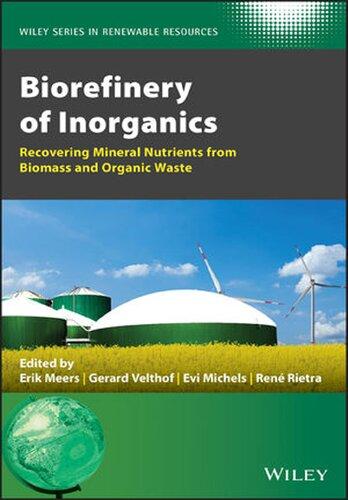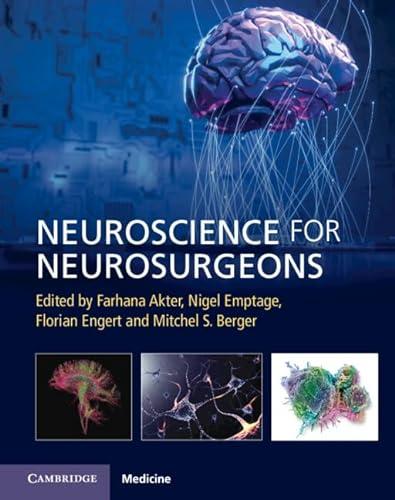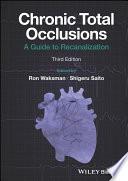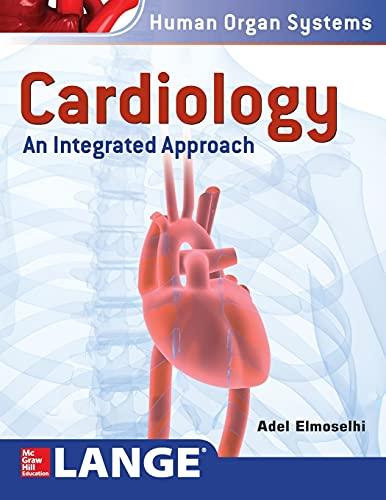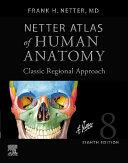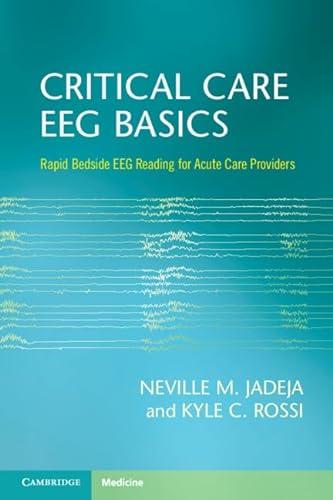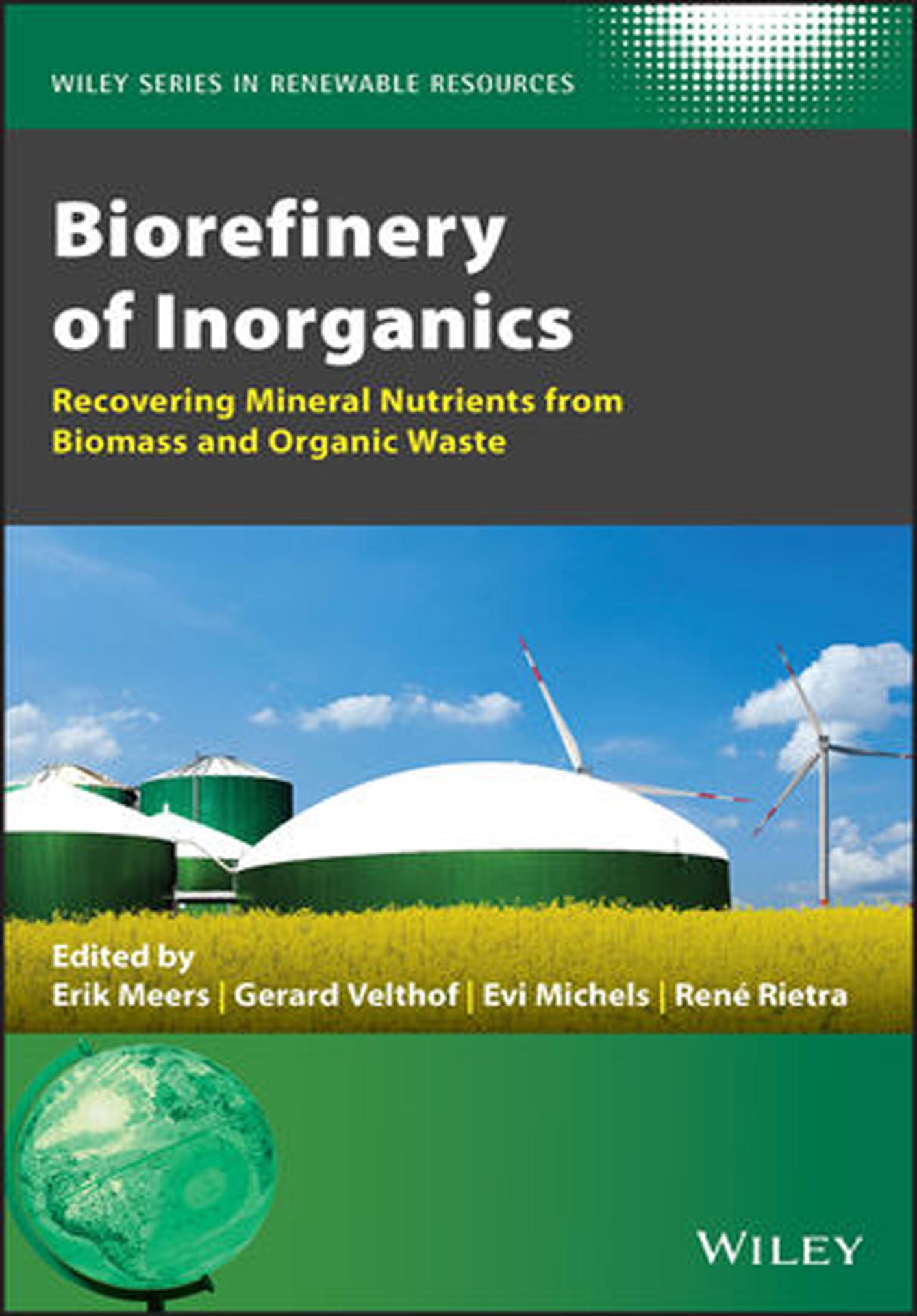Biorefineryof Inorganics
Editedby
ERIKMEERS
DepartmentofGreenChemistry&Technology,GhentUniversity,Belgium
GERARDVELTHOF
WageningenEnvironmentalResearch,TheNetherlands
EVIMICHELS
DepartmentofGreenChemistry&Technology,GhentUniversity,Belgium
RENÉRIETRA
WageningenEnvironmentalResearch,TheNetherlands
Thiseditionfirstpublished2020
©2020JohnWiley&SonsLtd
Allrightsreserved.Nopartofthispublicationmaybereproduced,storedinaretrievalsystem,ortransmitted,in anyformorbyanymeans,electronic,mechanical,photocopying,recordingorotherwise,exceptaspermittedby law.Adviceonhowtoobtainpermissiontoreusematerialfromthistitleisavailableat http://www.wiley.com/ go/permissions.
TherightofErikMeers,GerardVelthof,EviMichelsandRenéRietratobeidentifiedastheauthorsofthe editorialmaterialinthisworkhasbeenassertedinaccordancewithlaw
RegisteredOffices
JohnWiley&Sons,Inc.,111RiverStreet,Hoboken,NJ07030,USA
JohnWiley&SonsLtd,TheAtrium,SouthernGate,Chichester,WestSussex,PO198SQ,UK
EditorialOffice
TheAtrium,SouthernGate,Chichester,WestSussex,PO198SQ,UK
Fordetailsofourglobaleditorialoffices,customerservices,andmoreinformationaboutWileyproductsvisitus at www.wiley.com
Wileyalsopublishesitsbooksinavarietyofelectronicformatsandbyprint-on-demand.Somecontentthat appearsinstandardprintversionsofthisbookmaynotbeavailableinotherformats.
LimitofLiability/DisclaimerofWarranty
Inviewofongoingresearch,equipmentmodifications,changesingovernmentalregulations,andtheconstant flowofinformationrelatingtotheuseofexperimentalreagents,equipment,anddevices,thereaderisurgedto reviewandevaluatetheinformationprovidedinthepackageinsertorinstructionsforeachchemical,pieceof equipment,reagent,ordevicefor,amongotherthings,anychangesintheinstructionsorindicationofusageand foraddedwarningsandprecautions.Whilethepublisherandauthorshaveusedtheirbesteffortsinpreparing thiswork,theymakenorepresentationsorwarrantieswithrespecttotheaccuracyorcompletenessofthe contentsofthisworkandspecificallydisclaimallwarranties,includingwithoutlimitationanyimplied warrantiesofmerchantabilityorfitnessforaparticularpurpose.Nowarrantymaybecreatedorextendedby salesrepresentatives,writtensalesmaterialsorpromotionalstatementsforthiswork.Thefactthatan organization,website,orproductisreferredtointhisworkasacitationand/orpotentialsourceoffurther informationdoesnotmeanthatthepublisherandauthorsendorsetheinformationorservicestheorganization, website,orproductmayprovideorrecommendationsitmaymake.Thisworkissoldwiththeunderstandingthat thepublisherisnotengagedinrenderingprofessionalservices.Theadviceandstrategiescontainedhereinmay notbesuitableforyoursituation.Youshouldconsultwithaspecialistwhereappropriate.Further,readersshould beawarethatwebsiteslistedinthisworkmayhavechangedordisappearedbetweenwhenthisworkwaswritten andwhenitisread.Neitherthepublishernorauthorsshallbeliableforanylossofprofitoranyother commercialdamages,includingbutnotlimitedtospecial,incidental,consequential,orotherdamages.
LibraryofCongressCataloging-in-PublicationData
Names:Meers,Erik,1976-editor.|Velthof,Gerard,1964-editor.|Michels,Evi,1980-editor.|Rietra, Rene,1967-editor.
Title:Biorefineryofinorganics:recoveringmineralnutrientsfrom biomassandorganicwaste/editedbyErikMeers,FacultyofBioscience Engineer,LaboratoryofAnalyticalChem,GerardVelthof,EviMichels,ReneRietra, WageningenUniversity.
Description:Firstedition.|Hoboken,NJ:JohnWiley&Sons,Inc.,[2020] |Series:Wileyseriesinrenewableresources|Includesbibliographical referencesandindex.
Identifiers:LCCN2020005302(print)|LCCN2020005303(ebook)|ISBN 9781118921456(hardback)|ISBN9781118921463(adobepdf)|ISBN 9781118921470(epub)
Subjects:LCSH:Sewage–Purification–Nutrientremoval.|Factoryandtrade waste–Purification.|Nutrientpollutionofwater
Classification:LCCTD758.5.N58.B562020(print)|LCCTD758.5.N58 (ebook)|DDC631.8/69–dc23
LCrecordavailableat https://lccn.loc.gov/2020005302
LCebookrecordavailableat https://lccn.loc.gov/2020005303
CoverDesign:Wiley
CoverImage:©NataschaKaukorat/Shutterstock,Educationglobe©IngramPublishing/AlamyStockPhoto Setin10/12ptTimesLTStdbySPiGlobal,Chennai,India
PrintedandboundbyCPIGroup(UK)Ltd,Croydon,CR04YY 10987654321
SectionIGlobalNutrientFlowsandCyclinginFoodSystems1
1GlobalNutrientFlowsandCyclinginFoodSystems3 QianLiu,JingmengWang,YongHou,KimovanDijk,WeiQin,JanPeter Lesschen,GerardVelthof,andOeneOenema
1.1Introduction3
1.2PrimaryandSecondaryDrivingForcesofNutrientCycling4 1.3AnthropogenicInfluencesonNutrientCycling6 1.4TheGlobalNitrogenCycle7
1.5TheGlobalPhosphorusCycle9
1.6ChangesinFertilizerUseDuringtheLast50Years12
1.7ChangesinHarvestedCropProductsandinCropResiduesDuring theLast50Years14
1.8ChangesintheAmountsofNandPinAnimalProductsand Manures15
1.9ChangesintheTradeofFoodandFeed16
1.10ChangesinNutrientBalances16
1.11GeneralDiscussion17 References20
SectionIITheRoleofPolicyFrameworksintheTransition TowardNutrientRecycling23
2.1TowardaFrameworkthatStimulatesMineralRecoveryinEurope25 NicolasDeLaVegaandGregoryReuland
2.1.1TheImportanceofManagingOrganicResidues25
2.1.2TheRiseofNutrientandCarbonRecycling26
2.1.3TheEuropeanFrameworkforNutrientRecoveryandReuse(NRR)27
2.1.4EUWasteLegislation27
2.1.5MovingfromWastetoProductLegislationandtheInterplaywith OtherEULegislation29
2.1.6ComplyingwithExistingEnvironmentalandHealth&Safety Legislation30
2.1.7Conclusion32 References32
2.2LivestockNutrientManagementPolicyFrameworkintheUnitedStates33 GeorgineYorgeyandChadKruger
2.2.1Introduction33
2.2.2TheLegal-RegulatoryFrameworkforManureNutrient Management34
2.2.3CurrentManure-ManagementPractices35
2.2.4PublicInvestmentsforImprovementofManure-Management Practices36
2.2.5TheRoleoftheJudicialProcessandConsumer-DrivenPreferences37
2.2.6LimitationsoftheCurrentFramework38
2.2.7Conclusion39 References40
2.3BiomassNutrientManagementinChina:TheImpactofRapidGrowth andEnergyDemand43 PaulThiers
2.3.1Introduction43
2.3.2TheImpactofEconomicLiberalizationPolicyinthe1980sand 1990s43
2.3.3EnvironmentalProtectionEffortsandUnintendedConsequences44
2.3.4RenewableEnergyPolicyandItsImpactonBiomassManagement46 2.3.5Conclusion49 References50
2.4NutrientCyclinginAgricultureinChina53 LinMa,YongHou,andZhaohaiBai
2.4.1Introduction53
2.4.2NutrientCyclinginChina54
2.4.3EffectsontheEnvironment55
2.4.4NutrientManagementPolicies57
2.4.5FuturePerspectives59
2.4.5.1NationalNutrientManagementStrategy59
2.4.5.2ChallengesofTechnologyTransferinManureManagement59
2.4.5.3EnvironmentalProtection60
2.4.6Conclusion61 References63
SectionIIIStateoftheArtandEmergingTechnologiesin NutrientRecoveryfromOrganicResidues65
3.1ManureasaResourceforEnergyandNutrients67
IvonaSigurnjak,ReinhartVanPoucke,CélineVaneeckhaute,EviMichels, andErikMeers
3.1.1Introduction67
3.1.2EnergyProductionfromAnimalManure68
3.1.2.1AnaerobicDigestion71
3.1.2.2ThermochemicalConversionProcess73
3.1.3NutrientRecoveryTechniques76
3.1.3.1PhosphorusPrecipitation77
3.1.3.2AmmoniaStrippingandScrubbing77
3.1.3.3MembraneFiltration78
3.1.3.4PhosphorusExtractionfromAshes79
3.1.4Conclusion79 References79
3.2MunicipalWastewaterasaSourceforPhosphorus83
AleksandraBogdan,AnaAlejandraRoblesAguilar,EviMichels, andErikMeers
3.2.1Introduction83
3.2.2PhosphorusRemovalfromWastewater84
3.2.3SludgeManagement84
3.2.4CurrentStateofPRecoveryTechnologies85
3.2.4.1PhosphorusSaltsPrecipitation85
3.2.4.2PhosphorusRecoveryViaWet-ChemicalProcesses87
3.2.4.3PhosphorusRecoveryViaThermalProcesses88
3.2.4.4ChoiceofPhosphorusTechnologiesToday89
3.2.5FuturePRecoveryTechnologies90
3.2.5.1PhosphorusSaltRecoveryUpgrades90
3.2.5.2ThermalProcesses91
3.2.5.3NaturalProcessfortheRecoveryofPhosphorus91
3.2.6Conclusion92 References92
3.3AmmoniaStrippingandScrubbingforMineralNitrogenRecovery95 ClaudioBrienza,IvonaSigurnjak,EviMichels,andErikMeers
3.3.1Introduction95
3.3.2AmmoniaStrippingandScrubbingfromBiobasedResources96
3.3.2.1AcidScrubbingofExhaustAir97
3.3.2.2StrippingandScrubbingfromManure97
3.3.2.3StrippingandScrubbingfromAnaerobicDigestate97
3.3.2.4ManureandDigestateProcessingbyEvaporation98
3.3.3AlternativeScrubbingAgents98
3.3.3.1OrganicAcids98
3.3.3.2NitricAcid98
3.3.3.3Gypsum99
3.3.4IndustrialCasesofStrippingandScrubbing99
3.3.4.1WasteAirCleaningViaAcidScrubbing99
3.3.4.2RawDigestateProcessingViaStrippingandScrubbingand RecirculationoftheN-DepletedDigestate99
3.3.4.3LiquidFractionDigestateProcessingViaStrippingand Scrubbing100
3.3.4.4LiquidFractionofDigestateProcessingViaMembrane SeparationandStrippingandScrubbing100
3.3.5ProductQualityofAmmoniumSulfateandAmmoniumNitrate100
3.3.5.1AmmoniumSulfate101
3.3.5.2AmmoniumNitrate102
3.3.6Conclusion102 References103
SectionIVInspiringCasesinNutrientRecoveryProcesses107
4.1StruviteRecoveryfromDomesticWastewater109 AdrienMarchi,SamGeerts,BartSaerens,MarjoleineWeemaes, LiesDeClercq,andErikMeers
4.1.1Introduction109
4.1.2ProcessDescription110
4.1.3AnalysesandTests111
4.1.3.1MassBalance111
4.1.3.2StruvitePurity112
4.1.4OperationalBenefits114
4.1.4.1EnhancedDewaterability114
4.1.4.2EnhancedRecoveryPotential115
4.1.4.3ReducedScaling115
4.1.4.4ReducedPhosphorusContentintheSludgePellets116
4.1.4.5ReducedPandNLoadintheRejectionWater116
4.1.5EconomicEvaluation116
4.1.6FutureChallenges117
4.1.6.1In-DepthQualityScreening117
4.1.6.2ImprovedCrystalSeparation117
4.1.7Conclusion118 References118
4.2MineralConcentratesfromMembraneFiltration121 PaulHoeksmaandFridtjofdeBuisonjé
4.2.1Introduction121
4.2.2ProductionofMineralConcentrates121
4.2.2.1GeneralSet-up121
4.2.2.2Solid/LiquidSeparation122
4.2.2.3Pre-treatmentoftheLiquidFraction(Effluentfrom MechanicalSeparation)123
4.2.2.4ReverseOsmosis123
4.2.2.4.1Full-ScalePilotProductionPlants124
4.2.3MassBalance124
4.2.4CompositionofRawSlurry,SolidFraction,andRO-Concentrate125
4.2.4.1RawSlurry125
4.2.4.2SolidFraction128
4.2.4.3RO-Concentrate128
4.2.4.3.1NutrientsandMinerals128
4.2.4.3.2SecondaryNutrientsandTraceElements129
4.2.4.3.3InorganicMicrocontaminants129
4.2.4.3.4OrganicMicrocontaminants129
4.2.4.3.5VolatileFattyAcids129
4.2.5QualityRequirements129
4.2.6Conclusion130 References130
4.3PyrolysisofAgro-Digestate:NutrientDistribution133 EvertLeijenhorst
4.3.1Introduction133
4.3.1.1Background133
4.3.1.2ThePyrolysisProcess133
4.3.1.3PyrolysisofAgro-Digestate134
4.3.2Investigation135
4.3.2.1MaterialsandMethods135
4.3.2.2ProductAnalysisandEvaluation136
4.3.3ResultsandDiscussion138
4.3.3.1FastPyrolysis:InfluenceofTemperature138
4.3.3.1.1ProductDistribution138
4.3.3.1.2NutrientRecovery138
4.3.3.1.3ProductComposition142
4.3.3.2InfluenceofHeatingRate143
4.3.3.2.1ProductDistribution143
4.3.3.2.2NutrientRecovery143
4.3.4Conclusion143 Acknowledgment145 References146
4.4AgronomicEffectivityofHydratedPoultryLitterAsh147 PhillipEhlert
4.4.1Introduction147
4.4.2EnergyProductionProcess147
4.4.3CompositionofHPLA149
4.4.4AgronomicEffectivityofHPLA149
4.4.5Phosphorus152
4.4.6Potassium154
4.4.7RyeGrass155
4.4.8Acid-NeutralizingValue157
4.4.9Efficacy157
4.4.10Conclusion158 References159
4.5BioregenerativeNutrientRecoveryfromHumanUrine:Closingthe LoopinTurningWasteintoWealth161 JayantaKumarBiswas,SukantaRana,andErikMeers
4.5.1Introduction161
4.5.2CompositionandFertilizerPotential162
4.5.3StateoftheArtofRegenerativePractices162
4.5.3.1HUinAgriculture162
4.5.3.2HUinAquaculture164
4.5.4Cautions,Concerns,andConstraints168
4.5.5Conclusion171 References172
4.6Pilot-ScaleInvestigationsonPhosphorusRecoveryfromMunicipal Wastewater177
Marie-EdithPloteau,DanielKlein,JohanteMarvelde,LucSijstermans, AndersNättorp,Marie-LineDaumer,HervéPaillard,CédricMébarki, AniaEscudero,OlePahl,Karl-GeorgSchmelz,andFrankZepke
4.6.1Introduction177
4.6.2EuropeanandNationalIncentivestoActonMarketDrivers178
4.6.3PilotInvestigations179
4.6.3.1AcidLeachingSolutionstoRecoverPhosphorusfrom SewageSludgeAshes179
4.6.3.2PilotDemonstrationofThermalSolutionstoRecover PhosphorusfromSewageSludge:TheEuPhoRe® Process180
4.6.3.3Demonstrationofstruvitesolutionwithbiological acidificationtoincreasethePrecoveryfromsewagesludge182
4.6.3.4InnovativeTechnicalSolutionstoRecoverPfrom Small-ScaleWWTPs:DownscalingStruvitePrecipitation forRuralAreas182
4.6.3.5Algal-BasedSolutionstoRecoverPhosphorusfrom Small-ScaleWWTPs:APromisingApproachforRemote, Rural,andIslandAreas184 References186
SectionVAgriculturalandEnvironmentalPerformanceof BiobasedFertilizerSubstitutes:OverviewofFieldAssessments189
5.1FertilizerReplacementValue:LinkingOrganicResiduestoMineral Fertilizers191
RenéSchils,JaapSchröder,andGerardVelthof
5.1.1Introduction191
5.1.2NutrientPathwaysfromLandApplicationtoCropUptake192
5.1.2.1Nitrogen195
5.1.2.2Phosphorus197
5.1.3FertilizerReplacementValue198
5.1.3.1CropResponse202
5.1.3.2ResponsePeriod202
5.1.4ReferenceMineralFertilizer202
5.1.4.1CropandSoilType202
5.1.4.2ApplicationTimeandMethod202
5.1.4.3AssessmentMethod203
5.1.5FertilizerReplacementValuesinFertilizerPlans204
5.1.6Conclusion205 References212
5.2AnaerobicDigestionandRenewableFertilizers:CaseStudiesin NorthernItaly215
FabrizioAdani,GiulianaD’Imporzano,FulviaTambone, CarloRiva,GabrieleBoccasile,andValentinaOrzi
5.2.1Introduction215
5.2.2AnaerobicDigestionasaTooltoCorrectlyManageAnimalSlurries216
5.2.3ChemicalandPhysicalModificationofOrganicMatterand NutrientsduringAnaerobicDigestion218
5.2.4FromDigestatetoRenewableFertilizers220
5.2.4.1N-FertilizerfromtheLFofDigestate220
5.2.4.2OrganicFertilizerfromtheSFofDigestate223
5.2.5EnvironmentalSafetyandHealthProtectionUsingDigestate224
5.2.6Conclusion227 References227
5.3NutrientsandPlantHormonesinAnaerobicDigestates: CharacterizationandLandApplication231 ShubiaoWuandRenjieDong
5.3.1Introduction231
5.3.2NutrientCharacterizationinAnaerobicDigestedSlurry233
5.3.2.1N,P,andKContents233
5.3.2.2BioactiveSubstances236
5.3.3UseofDigestatesasFertilizersforPlantGrowth237
5.3.4EffectofDigestateonSeedGermination238
5.3.5PositiveEffectsofDigestatesonSoil238
5.3.5.1EffectsonNutrientProperties238
5.3.5.2EffectsonMicrobialActivity239
5.3.5.3PotentialNegativeEffects240
5.3.6Conclusion243 References243
5.4EnhancingNutrientUseandRecoveryfromSewageSludgetoMeet CropRequirements247 RubenSakrabani
5.4.1TrendsinSewageSludgeManagementinAgriculture247
5.4.2OrganomineralFertilizerUseinCaseStudies249
5.4.3CaseStudy1:FieldTrialUsingOMF(Broxton)250
5.4.4CaseStudy2:FieldTrialUsingOMF(Silsoe)252
5.4.5Conclusion255 Acknowledgments255 References255
5.5ApplicationofMineralConcentratesfromProcessedManure259 GerardVelthof,PhillipEhlert,JaapSchröder,JantinevanMiddelkoop,Wim vanGeel,andGerardHolshof
5.5.1Introduction259
5.5.2ProductCharacterization260
5.5.3AgronomicResponse261
5.5.3.1PotExperiments261
5.5.3.2FieldExperiments262
5.5.4RiskofNitrogenLosses263
5.5.4.1AmmoniaEmission263
5.5.4.2NitrousOxideEmission264
5.5.4.3NitrateLeaching266
5.5.5Conclusion267 References267
5.6LiquidFractionofDigestateandAirScrubberWaterasSourcesfor MineralN271 IvonaSigurnjak,EviMichels,andErikMeers
5.6.1Introduction271
5.6.2MaterialsandMethods272
5.6.2.1ExperimentalDesign272
5.6.2.2FertilizerSampling274
5.6.2.3PlantandSoilSampling275
5.6.2.4StatisticalAnalysis275
5.6.2.5NitrogenUseEfficiency276
5.6.3ImpactofFertilizationStrategiesonCropProduction276
5.6.4ImpactofFertilizationStrategiesonSoilProperties279
5.6.5AdjustedNitrogenUseEfficiency279
5.6.6Conclusion281 References281
5.7EffectsofBiocharProducedfromWasteonSoilQuality283 KorZwart
5.7.1Introduction283
5.7.2BiocharProductionandProperties284
5.7.2.1Pyrolysis284
5.7.2.2BiocharFeedstock285
5.7.2.3BiocharComposition286
5.7.2.4BiocharStructure287
5.7.2.5FunctionalGroups288
5.7.3EffectofBiocharonSoilFertility288
5.7.3.1FactorsDeterminingSoilFertility288
5.7.3.2EffectsofBiocharonSoilFertilityFactors289
5.7.3.2.1SoilTextureandStructure289
5.7.3.2.2SoilOrganicMatter290
5.7.3.2.3WaterAvailability291
5.7.3.2.4NutrientAvailability291
5.7.3.2.5CationExchangeCapacity292
5.7.3.3BiocharasaFertilizerorSoilConditioner293
5.7.4TrendsinBiocharResearch294 References295
5.8AgronomicEffectofCombinedApplicationofBiocharandNitrogen Fertilizer:AFieldTrial301 WeiZhengandBrajendraK.Sharma
5.8.1Introduction301
5.8.2MaterialsandMethods303
5.8.2.1Biochars303
5.8.2.2SoilandSiteDescription303
5.8.2.3FieldExperimentalDesign303
5.8.2.4MeasurementsandAnalyses304
5.8.3ResultsandDiscussion305
5.8.3.1EffectofBiocharApplicationonAgronomicYields305
5.8.3.2EffectofBiocharasaSoilAmendmentonSoilQuality306 Acknowledgments308 References308
SectionVIEconomicsofBiobasedProductsandTheirMineral Counterparts311
6.1EconomicsofBiobasedProductsandTheirMineralCounterparts313 JeroenBuysseandJuanTurCardona
6.1.1Introduction313
6.1.2FertilizerDemand314
6.1.2.1CropDemand316
6.1.2.2DriversoftheIncreasedUseofMineralFertilizers317
6.1.2.3DriversofBiobasedFertilizerDemand318
6.1.2.4ImportanceofFertilizerUseintheCostofProduction319
6.1.3FertilizerSupply320
6.1.3.1GlobalProduction:StatisticsandRegionalDistribution320
6.1.3.2LinkBetweenFood,Fertilizer,andFuelPrices320
6.1.3.3ConcentrationandMarketPower322
6.1.3.4ImpactofaStrongFertilizerIndustryontheProductionof BiobasedFertilizers324
6.1.4Conclusion325 References326
SectionVIIEnvironmentalImpactAssessmentonthe ProductionandUseofBiobasedFertilizers329
7.1EnvironmentalImpactAssessmentontheProductionandUseof BiobasedFertilizers331 LarsStoumannJensen,MylesOelofse,MarieketenHoeve, andSanderBruun
7.1.1Introduction331
7.1.2LifeCycleAssessmentofBiobasedFertilizerProductionandUse332
7.1.2.1LifeCycleAssessment332
7.1.2.2TheFourPhasesofLCA333
7.1.2.2.1GoalandScope333
7.1.2.2.2InventoryAnalysis335
7.1.2.2.3ImpactAssessment336
7.1.2.2.4Interpretation339
7.1.3EnvironmentalImpactsfromtheProductionandUseofBiobased Fertilizers339
7.1.3.1ClimateChangeandGlobalWarmingPotential339
7.1.3.2Eutrophication340
7.1.3.3Acidification341
7.1.3.4Eco-andHumanToxicity341
7.1.3.5ResourceUse343
7.1.3.6LandUse:DirectandIndirectLandUseChange344
7.1.3.7OtherImpacts,IncludingOdor344
7.1.4BenefitsandValueofBiobasedFertilizersinAgriculturaland Non-AgriculturalSectors345
7.1.4.1CropYield,NutrientUseEfficiency,andSubstitutionof MineralFertilizers345
7.1.4.2SubstitutionofPeat-BasedProducts346
7.1.4.3SoilQualityEnhancement347
7.1.5IntegrativeComparisonsofSyntheticandBiobasedFertilizers347
7.1.5.1SyntheticFertilizers347
7.1.5.2UnprocessedAnimalManures348
7.1.5.3MechanicallySeparatedandProcessedAnimalManures351
7.1.5.4Manure-BasedDigestatesandPost-ProcessingProducts352
7.1.5.5MunicipalSolidWasteandWastewaterBiosolids ProcessedbyADorComposting353
7.1.5.6MineralConcentrates,Extracts,Precipitates,Chars,and AshesfromOrganicWastes356
7.1.6Conclusion356 Acknowledgments357 References357
7.2CaseStudy:AcidificationofPigSlurry363
LarsStoumannJensen,MylesOelofse,MarieketenHoeve, andSanderBruun
7.2.1Introduction363
7.2.2Conclusion367 Acknowledgments368 References368
7.3CaseStudy:CompostingandDrying&PelletizingofBiogasDigestate369 KatarzynaGolkowska,IanVázquez-Rowe,DanielKoster,ViooltjeLebuf, EnricoBenetto,CélineVaneekhaute,andErikMeers
7.3.1Introduction369
7.3.2TunnelComposting vs BaselineScenario370
7.3.3DryingandPelletizing vs BaselineScenario371
7.3.4AssumptionsandCalculationsRelatedtoBiomassFlow372
7.3.4.1CharacteristicsoftheInputandOutputStreams372
7.3.4.2Storage,Transport,andSpreading373
7.3.4.3SupportingData373
7.3.5Goal,Scope,andAssessmentMethods374
7.3.6Results374
7.3.6.1TunnelComposting377
7.3.6.2DryingandPelletizing377
7.3.6.3EcosystemQuality378
7.3.6.4Energy,Transport,andSpreading378
7.3.7Conclusion378 Acknowledgments379 References379
SectionVIIIModelingandOptimizationofNutrientRecovery fromWastes:AdvancesandLimitations381
8.1ModelingandOptimizationofNutrientRecoveryfromWastes: AdvancesandLimitations383 CélineVaneeckhaute,ErikMeers,EvangelinaBelia, andPeterVanrolleghem
8.1.1Introduction383
8.1.2FertilizerQualitySpecifications386
8.1.2.1GenericFertilizerQualityRequirements386
8.1.2.2PointsofAttentionforBiobasedProducts388
8.1.3ModelingandOptimization:AdvancesandLimitations388
8.1.3.1AnaerobicDigestion389
8.1.3.2PhosphorusPrecipitation/Crystallization390
8.1.3.3AmmoniaStrippingandAbsorption391
8.1.3.4AcidicAirScrubbing393
8.1.4ModelingObjectivesandFurtherResearch394
8.1.4.1DefinitionofModelingObjectives394
8.1.4.2TowardaGenericNutrientRecoveryModelLibrary394
8.1.4.3NumericalSolution396
8.1.5Conclusion397 Acknowledgments397 References397
8.2SoilDynamicModels:PredictingtheBehaviorofFertilizersintheSoil405 MariusHeinen,FalentijnAssinck,PietGroenendijk,andOscarSchoumans
8.2.1Introduction405
8.2.2SoilNandPProcesses406
8.2.2.1MainDynamicProcesses406
8.2.3OtherRelatedStateandRateVariables407
8.2.3.1WaterFlow407
8.2.3.2SoilWaterContent407
8.2.3.3SoilTemperature407
8.2.3.4SoilpH408
8.2.3.5GasTransport408
8.2.3.6CropGrowthandNutrientDemand408
8.2.3.7DynamicSimulation408
8.2.4OrganicMatter409
8.2.4.1Multi-PoolModelswithConstantDecomposition RateFactor410
8.2.4.2ModelswithaTime-DependentDecompositionRateFactor411
8.2.4.3EnvironmentalResponseFactors413
8.2.5Nitrogen414
8.2.5.1AdsorptionandDesorption414
8.2.5.2Nitrification415
8.2.5.3Denitrification415
8.2.5.4Leaching416
8.2.5.5GaseousNLosses416
8.2.6Phosphorus417
8.2.6.1Adsorption,Desorption,Fixation,andPrecipitation418
8.2.6.2CalculationofSoil-AvailableP419
8.2.6.3Leaching419
8.2.7IndicesofNutrientUseEfficiency420
8.2.8OtherNutrients420
8.2.9OverviewofProcessesinSelectedSoilDynamicsModels421
8.2.10ModelParameterizationofBiobasedFertilizers424
8.2.11Conclusion426 References429
ListofContributors
FabrizioAdani GruppoRicicla,Lab.-UniversitàdegliStudidiMilano,DISAA,AgricolturaeAmbiente,Milano,Italy
FalentijnAssinck WageningenEnvironmentalResearch,WageningenUniversity& Research,Wageningen,TheNetherlands
ZhaohaiBai CenterforAgriculturalResourcesResearch,InstituteofGeneticand DevelopmentalBiology,CAS,Shijiazhuang,Hebei,China
EvangelinaBelia PrimodalInc.,Québec,Canada
EnricoBenetto LuxembourgInstituteofScienceandTechnology(LIST),EnvironmentalResearchandInnovation(ERIN),Luxemburg
JayantaKumarBiswas DepartmentofEcologicalStudies,UniversityofKalyani,West Bengal,India
InternationalCentreforEcologicalEngineering,UniversityofKalyani,WestBengal,India
GabrieleBoccasile RegioneLombardiaDG-Agricoltura,Milan,Italy
AleksandraBogdan DepartmentofGreenChemistry&Technology,FacultyofBioscienceEngineering,GhentUniversity,Ghent,Belgium
ClaudioBrienza DepartmentGreenChemistryandTechnology,FacultyofBioscience Engineering,GhentUniversity,Ghent,Belgium
SanderBruun DepartmentofPlantandEnvironmentalSciences,UniversityofCopenhagen,Denmark
FridtjofdeBuisonjé WageningenLivestockResearch,WageningenUniversity& Research,WageningenTheNetherlands
JeroenBuysse DepartmentofAgriculturalEconomics,FacultyofBioscienceEngineering,GhentUniversity,Belgium
JuanTurCardona DepartmentofAgriculturalEconomics,FacultyofBioscienceEngineering,GhentUniversity,Belgium
LiesDeClercq DepartmentofPhysicalandAnalyticalChemistry,GhentUniversity, Ghent,Belgium
GiulianaD’Imporzano GruppoRicicla,Lab.-UniversitàdegliStudidiMilano, DISAA,AgricolturaeAmbiente,Milano,Italy
Marie-LineDaumer Institutnationalderechercheensciencesettechnologiespour l’environnementetl’agriculture,Rennes,France
KimovanDijk WageningenEnvironmentalResearch,TheNetherlands SoilQualityDepartment,WageningenUR,Wageningen,TheNetherlands
RenjieDong KeyLaboratoryofCleanUtilizationTechnologyforRenewableEnergyin MinistryofAgriculture,CollegeofEngineering,ChinaAgriculturalUniversity,Beijing, PRChina
PhillipEhlert WageningenEnvironmentalResearch,WageningenUniversity& Research,Wageningen,TheNetherlands
AniaEscudero GlasgowCaledonianUniversity,Glasgow,Scotland
WimvanGeel WageningenPlantResearch,WageningenUniversity&Research, Wageningen,TheNetherlands
SamGeerts Aquafinn.v.,Aartselaar,Belgium
KatarzynaGolkowska LuxembourgInstituteofScienceandTechnology(LIST), EnvironmentalResearchandInnovation(ERIN),Luxemburg
PietGroenendijk WageningenEnvironmentalResearch,WageningenUniversity& Research,Wageningen,theNetherlands
MariusHeinen WageningenEnvironmentalResearch,WageningenUniversity& Research,Wageningen,theNetherlands
PaulHoeksma WageningenLivestockResearch,WageningenUniversity&Research, WageningenTheNetherlands
MarieketenHoeve DepartmentofPlantandEnvironmentalSciences,Universityof Copenhagen,Denmark
GertjanHolshof WageningenLivestockResearch,WageningenUniversity&Research, Wageningen,TheNetherlands
YongHou SoilQualityDepartment,WageningenUniversity&Research,Wageningen, TheNetherlands
CollegeofResourcesandEnvironmentalSciences,ChinaAgriculturalUniversity
YongHou CollegeofResourcesandEnvironmentSciences,ChinaAgriculturalUniversity,Beijing,China
LarsStoumannJensen DepartmentofPlantandEnvironmentalSciences,University ofCopenhagen,Denmark
DanielKlein Lippeverband,Essen,Germany
DanielKoster LuxembourgInstituteofScienceandTechnology(LIST),Environmental ResearchandInnovation(ERIN),Luxemburg
ChadKruger CenterforSustainingAgric&NaturalResources,WA,USA
ViooltjeLebuf FlemishCoordinationCentreforManureProcessing,Belgium
EvertLeijenhorst BTGBiomassTechnologyGroupB.V.Enschede,TheNetherlands
JanPeterLesschen WageningenEnvironmentalResearch,WageningenUniversity& Research,Wageningen,TheNetherlands
QianLiu SoilQualityDepartment,WageningenUniversity&Research,Wageningen, TheNetherlands
LinMa CenterforAgriculturalResourcesResearch,InstituteofGeneticandDevelopmentalBiology,CAS,Shijiazhuang,Hebei,China.
AdrienMarchi Aquafinn.v.,Aartselaar,Belgium
JohanteMarvelde Lippeverband,Essen,Germany
ErikMeers DepartmentofGreenChemistry&Technology,FacultyofBioscienceEngineering,GhentUniversity,Ghent,Belgium
EviMichels DepartmentofGreenChemistry&Technology,FacultyofBioscienceEngineering,GhentUniversity,Ghent,Belgium
JantinevanMiddelkoop WageningenLivestockResearch,WageningenUniversity& Research,Wageningen,TheNetherlands
AndersNättorp SchoolofLifeSciencesFHNW,Muttenz,Switzerland
MylesOelofse DepartmentofPlantandEnvironmentalSciences,UniversityofCopenhagen,Denmark
OeneOenema SoilQualityDepartment,WageningenEnvironmentalResearch, WageningenUniversity&Research,Wageningen,TheNetherlands
ValentinaOrzi GruppoRicicla,Lab.-UniversitàdegliStudidiMilano,DISAA,AgricolturaeAmbiente,Milano,Italy
OlePahl GlasgowCaledonianUniversity,Glasgow,Scotland
HervéPaillard VéoliaEnvironnement,Aubervilliers,France
MarieEdithPloteau Lippeverband,Essen,Germany
ReinhartVanPoucke DepartmentofGreenChemistry&Technology,FacultyofBioscienceEngineering,GhentUniversity,Ghent,Belgium
WeiQin SoilQualityDepartment,WageningenUniversity,TheNetherlands CollegeofResourcesandEnvironmentalSciences,ChinaAgriculturalUniversity
SukantaRana InternationalCentreforEcologicalEngineering,UniversityofKalyani, WestBengal,India
GregoryReuland EuropeanBiogasAssociation,RenewableEnergyHouse,Belgium DepartmentofGreenChemistry&Technology,FacultyofBioscienceEngineering,Ghent University,Ghent,Belgium
CarloRiva GruppoRicicla,Lab.-UniversitàdegliStudidiMilano,DISAA,Agricoltura eAmbiente,Milano,Italy
AnaRobles DepartmentofGreenChemistry&Technology,FacultyofBioscienceEngineering,GhentUniversity,Ghent,Belgium
BartSaerens Aquafinn.v.,Aartselaar,Belgium
RenéSchils WageningenUniversity&Research,WageningenPlantResearch, WageningenUniversity&Research,Wageningen,TheNetherlands
Karl-GeorgSchmelz Emschergenossenschaft,Essen,Germany
OscarSchoumans WageningenEnvironmentalResearch,WageningenUniversity& Research,Wageningen,theNetherlands
JaapSchröder WageningenPlantResearch,WageningenUniversity&Research, Wageningen,TheNetherlands
BrajendraK.Sharma IllinoisSustainableTechnologyCenter,UniversityofIllinoisat Urbana-Champaign,Champaign,Illinois,USA
IvonaSigurnjak DepartmentofGreenChemistry&Technology,FacultyofBioscience Engineering,GhentUniversity,Ghent,Belgium
LucSijstermans SlibverwerkingNoord-Brabant,Moerdijk,theNetherlands
FulviaTambone GruppoRicicla,Lab.-UniversitàdegliStudidiMilano,DISAA,AgricolturaeAmbiente,Milano,Italy
PaulThiers DepartmentofPoliticalScience,WashingtonStateUniversity–Vancouver, VancouverUSA
IanVázquez-Rowe PontificiaUniversidadCatólicadelPerú,DepartmentofEngineering,PeruvianLCANetwork,Peru UniversityofSantiagodeCompostela,DepartmentofChemicalEngineering,Santiagode Compostela,Spain
CélineVaneeckhaute BioEngine,ResearchTeamonGreenProcessEngineeringand Biorefineries,ChemicalEngineeringDepartment,UniversitéLaval,Quebec,Canada
PeterVanrolleghem BioEngine,ChemicalEngineeringDepartment,UniversitéLaval, Québec,Canada
NicolasDeLaVega EuropeanBiogasAssociation,Brussels,Belgium
GerardVelthof WageningenEnvironmentalResearch,WageningenUniversity& Research,Wageningen,TheNetherlands
JingmengWang SoilQualityDepartment,WageningenUniversity&Research, Wageningen,TheNetherlands
MarjoleineWeemaes Aquafinn.v.,Aartselaar,Belgium
ShubiaoWu KeyLaboratoryofCleanUtilizationTechnologyforRenewableEnergyin MinistryofAgriculture,CollegeofEngineering,ChinaAgriculturalUniversity,Beijing, PRChina
GeorgineYorgey CenterforSustainingAgric&NaturalResources,WA,USA
FrankZepke EuPhoReGmbH,Telgte,Germany
WeiZheng IllinoisSustainableTechnologyCenter,UniversityofIllinoisat Urbana-Champaign,Champaign,Illinois,USA
KorZwart WageningenEnvironmentalResearch,WageningenUniversity&Research, TheNetherlands
